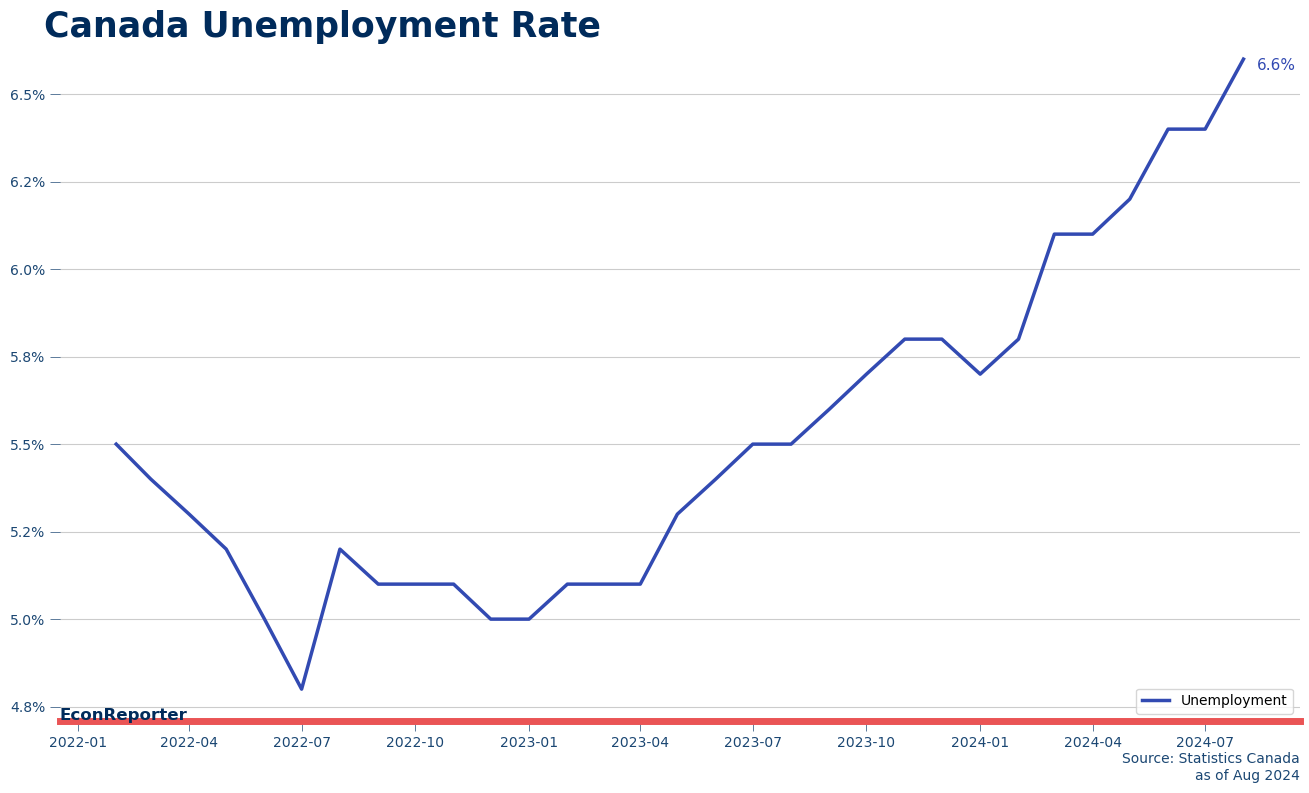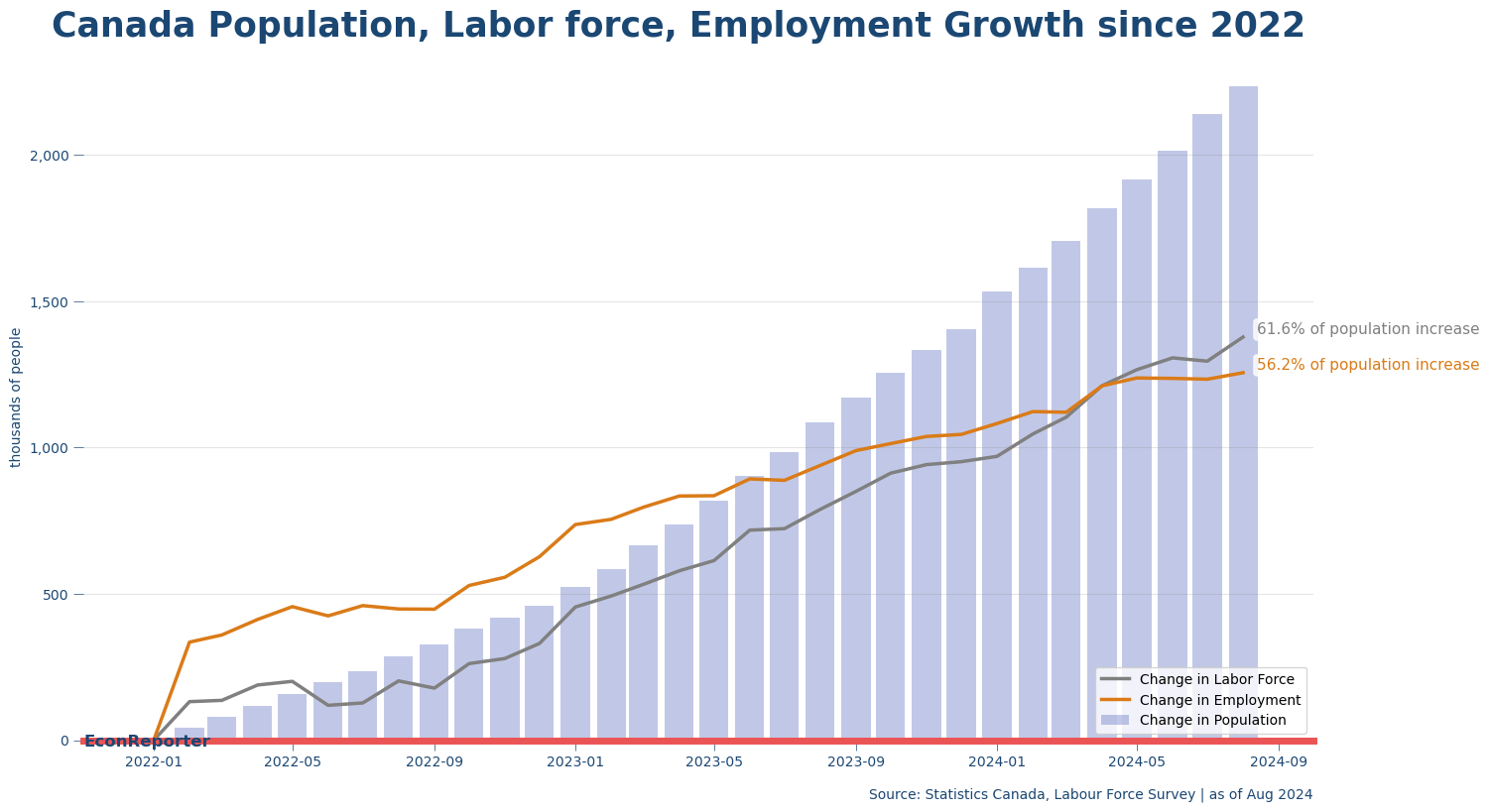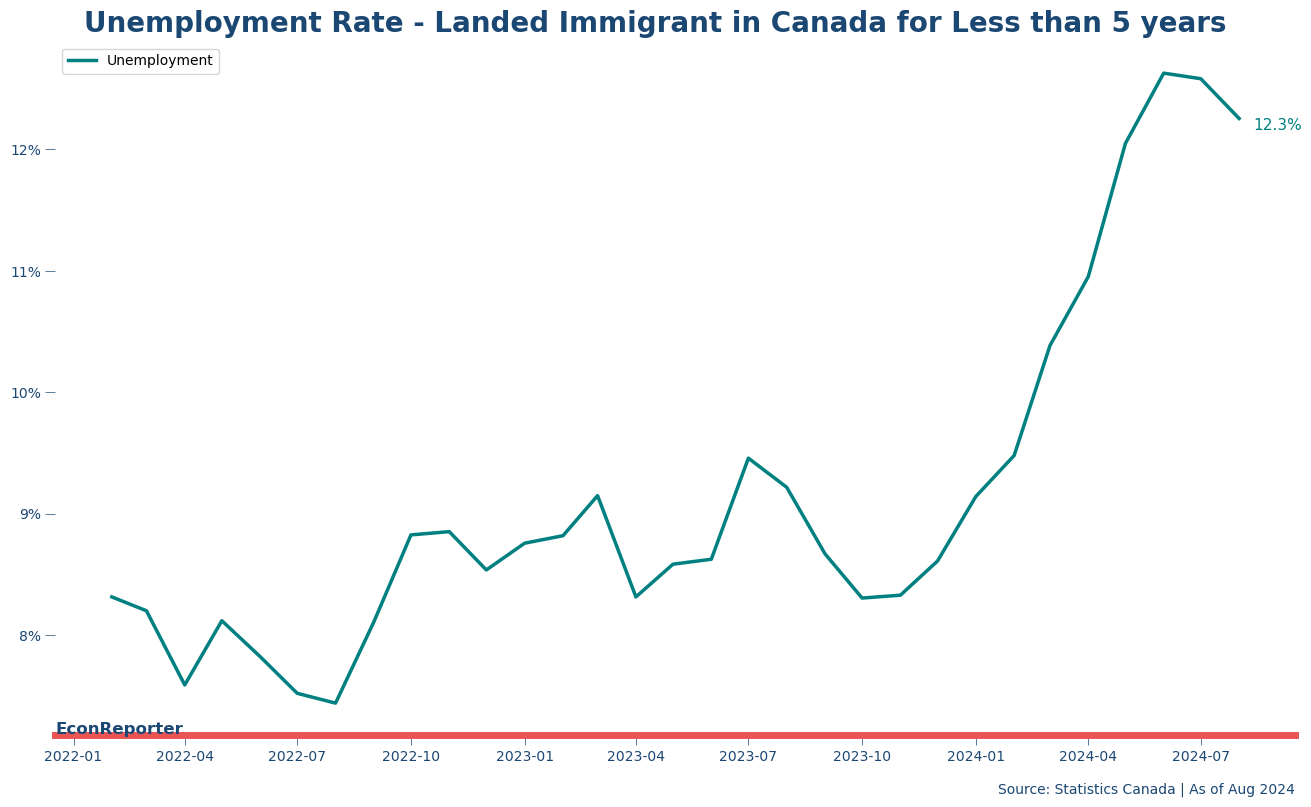Canada’s labor market has cooled down rapidly this year. Unemployment rate rose to 6.6% in August, from 5.7% at the start of the year.
Similar to the situation in the US, we haven’t seen a sharp rise in layoff in general. Employment merely flatlined, at least of yet. The major issue is that the not enough job are created to digest the explosive population growth over the last few years and this integration problem is growing larger every month.
More than 2.2 million people added to the country’s population since the start of 2022, according to estimates from Labor Force Survey.
- While the increased population is most likely driven by increase in non-permanent resident and landed immigrants, important to note that there are other contributing factors like Canadian who are recently entered 15 years of age.
Over the same period, over 1.3 million people joined labor force. Put in another way, the increase size of the labor force since 2022 amounts to 61.6% of the population growth. That’s a 61.6% “labor force participation rate”.
- Though the “new entrants” also include people who exited the labor force during the Covid period as well as previous students, etc, making this “participation rate” likely an overestimation of how many new comers entered the labor force.
Labor force entrants find no jobs
Meanwhile, accumulated employment growth was by less than 1.3 million. As illustrated in the graph below, problem arose Q2 this year — growth in employment started to lag expansion in labor force. The accumulated increase since 2022 for the two figures crossed for the first time in March this year. After that point, people who enters the labor force are mostly added to the unemployed population and drove the unemployment rate higher.
We can look at the dynamic in another way. The first sign of trouble actually emerged earlier, when the “employment rate” for the after-2022 population growth (employment growth/population growth) fell below 100% in mid-2023.
Then it became obvious as the “unemployment rate” for post-2022 labor force entrants — (labor force growth – employment growth) / labor force growth — turned positive in April this year and now rose to close to 8.9%
High labor force participation for recent immigrants translates to high unemployment
On a related note though, according to StatCan’s labor statistics, recently landed immigrants, those who ware awarded permanent residency for less five years or less, actually have a particularly high labor force participation rate. The rate reached to 79% in August, compared to 65% for the general population.
That high participation level and eagerness to work and contribute to the society, nonetheless, simply translated to rising unemployment rate now. The unemployment rate for this demographic group shot up to above 12% and remain there in recent months, an elevated level last seen in 2015 if we exclude data during the pandemic period.
Afterall, with the Canadian population estimated to be 32 million people at the start of 2022, it experienced a 7.1% increase in size in less than three years; in the meantime, the size of the labor force also increased 6.7%, from 21 million people. It’s not hard to imagine that a very strong economy is needed absorb all of them.
Lower interest rate to the rescue?
Bank of Canada since the start of 2022 increased its policy interest rate from 0.25% to 5% by July 2023 to combat inflation. The economy was no longer as strong as the result.
Bank of Canada now summarized the rising unemployment as part of the symptom of the “excess supply” facing Canadian economy. The central bank said in its July Monetary Policy Report that, assuming the Canadian federal government’s policy to reduce net inflow of non-permanent residents can lower population growth to 1.7% in 2025-26, from 3.3% this year, excess supply “should continue diminishing gradually” towards 2026.
However, it’s also important to note that their projected solution comprises not only a slowing population growth, but also expansion in GDP growth, to around 2.25% over 2025 and 2026. Where the extra growth comes from? It’s the assumption that rate cuts will work its magic through the economy by boosting per capita consumption and residential investment.
Is putting both immigration policy and monetary policy in reverse gear the fix-all solutions to the unemployment problem? It remains to be seen as, sadly, both policies need quite some time to have any effect on the real economy. In the meantime, new comers to the labor force, not only immigrants but also younger workers, likely has to struggle through this adjustment period.













